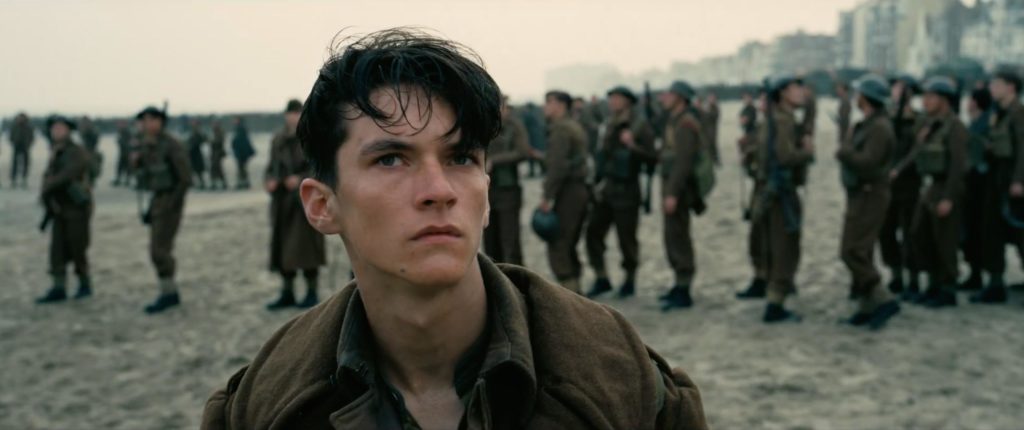
In Dunkirk, Christopher Nolan has written and directed a gripping historical thriller, somehow both personal and vast. It’s a remarkable achievement of both storytelling and filmmaking. Nolan chooses to tell us the story through the lenses of a few minor participants without losing any of the epic sweep of the event.
Dunkirk is the story of one of World War II’s most pivotal events. It’s May, 1940 – over a year before Hitler invaded Russia and over a year-and-a-half before the US entered the war. German forces have swept across Europe and now control the entire continent. It’s very thinkable that Germany will invade Britain. Germany is winning, and it’s more plausible than not that Germany will win the war.
The Germans have trapped a British/French army of 400,000 on a beach in France, certain to be captured or annihilated. The British navy has the capacity to evacuate 40,000 of them in the best case. But the best case can’t be operationalized because, when the British load 800 soldiers on a destroyer, German bombers and submarines sink it. So the British resort to a desperate measure by enlisting 700 small civilian boats – fishing boats, pleasure craft, trawlers, ferries and tugs – to cross the English Channel and pick up the soldiers from an active battle zone. Amazingly, it worked and 340,000 of the troops were rescued, saving them to deter a German invasion of Britain.
Nolan shows us every conceivable peril faced by the rescuers and the rescued, from aerial bombardment to submarine attack. He starts us following a couple of ordinary infantrymen (Fionn Whiteheand and Aneurin Barnard). When they find a wounded man on the beach, they look at each other wordlessly, toss him on a stretcher take off at the full run for a waiting naval vessel; it’s not spelled out, but they aren’t being selfless – they are trying to jump the line to the ship and get evacuated before hundreds of thousands of other men. They learn that getting off the beach isn’t that easy. Soon, Nolan weaves in a determined civilian heading his tiny boat across the English Channel (the great actor Mark Rylance) and the RAF fighter pilots (the commander played by Tom Hardy) who try to protect the beaches and the evacuation vessels. It’s a race against time for each of the characters as they navigate hazard after hazard, and the experience throbs with intensity
Dunkirk is very historically accurate, although the story has been compressed to a couple of days, and the actual evacuation took over a week. Nolan jumbles his timelines, and sometimes we are jarred by moving from daytime in one story thread to nighttime in another. But the threads eventually converge.
In particular, the depiction of aerial warfare is extraordinary, including what it must have been like inside a cockpit that is hit by enemy fire. Dunkirk contains probably the best ever movie shot of a plane ditching in the ocean. We see what it must have been like to be on a ship sunk by submarine torpedo (hint: much less romantic than Titanic‘s sinking). The Germans employed a Stuka dive bomber, which was outfitted with sirens to terrify its victims on the ground or sea; Dunkirk actually replicates the scream of the Stuka’s sirens very convincingly.
Rylance is superb and the rest of the cast does very well, including Cillian Murphy as a shell-shocked soldier and Kenneth Branagh as an embattled naval commander.
Near the end of Dunkirk, a fighter plane runs out of fuel and glides across the beachfront in one of the most beautiful series of shots in recent cinema.
Dunkirk is that rare breed – a white knuckler with relateable characters and historical integrity. It’s one of the very best films of 2017.
